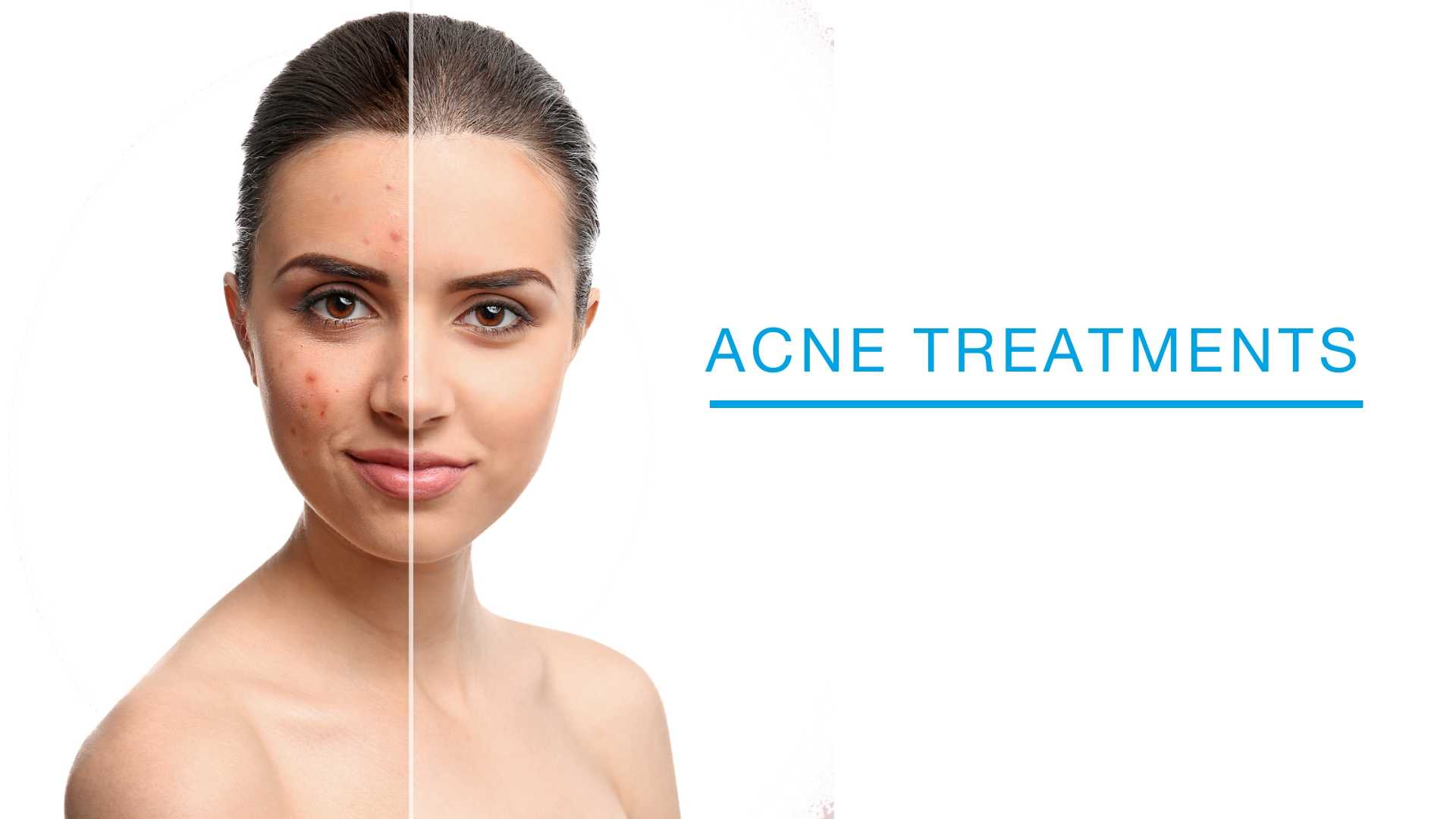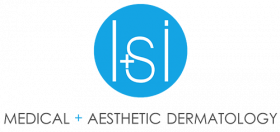
SCHEDULE A CONSULTATION
Schedule by phone at (973) 635-5050
or fill out the online consultation request
By submitting this form you agree to be contacted via phone/email/text
Acne Treatment at the Laser + Skin Institute
What is Acne?
Acne treatment is the term for plugged pores (blackheads and whiteheads), pimples, and even deeper lumps (cysts or nodules) that occur on the face, neck, chest, back, shoulders and even the upper arms. Acne affects most teenagers to some extent. However, the disease is not restricted to any age group; adults in their 20s – even into their 40s – can get acne. While not a life threatening condition, acne can be upsetting and disfiguring. When severe, acne can lead to serious and permanent scarring. Even less severe cases can lead to scarring.
Types of Acne
When you read about acne or other skin diseases, you encounter words or phrases that may be confusing. For example, the words used to describe the lesions of acne—comedo, papule, pustule, nodule and cyst—are understandable only if you know each word’s definition. It also is helpful to have a photo that is characteristic for each type of lesion.
Here is a brief summary of definitions of words used to describe acne. Let’s begin, though, with the definition of lesion, an all-purpose word:
Lesion—a physical change in body tissue caused by disease or injury. A lesion may be external (e.g., acne, skin cancer, psoriatic plaque, knife cut), or internal (e.g., lung cancer, atherosclerosis in a blood vessel, cirrhosis of the liver).
Thus, when you read about acne lesions you understand what is meant—a physical change in the skin caused by a disease process in the sebaceous follicle.
Acne lesions range in severity from comedones (blackheads and whiteheads) to nodules and cysts. Here is a brief definition of acne lesions:
Comedo (plural comedones)—A comedo is a sebaceous follicle plugged with sebum, dead cells from inside the sebaceous follicle, tiny hairs, and sometimes bacteria. When a comedo is open, it is commonly called a blackhead because the surface of the plug in the follicle has a blackish appearance. A closed comedo is commonly called a whitehead; its appearance is that of a skin-colored or slightly inflamed “bump” in the skin. The whitehead differs in color from the blackhead because the opening of the plugged sebaceous follicle to the skin’s surface is closed or very narrow, in contrast to the distended follicular opening of the blackhead. Neither blackheads nor whiteheads should be squeezed or picked open, unless extracted by a dermatologist under sterile conditions. Tissue injured by squeezing or picking can become infected by staphylococci, streptococci and other skin bacteria.
Who gets acne?
Close to 100% of people between the ages of twelve and seventeen have at least an occasional whitehead, blackhead or pimple, regardless of race or ethnicity. Many of these young people are able to manage their acne with over-the-counter (nonprescription) treatments. For some, however, acne is more serious. In fact, by their mid-teens, more than 40% of adolescents have acne severe enough to require some treatment by a physician.
In most cases, acne starts between the ages of ten and thirteen and usually lasts for five to ten years. It normally goes away on its own sometime in the early twenties. However, acne can persist into the late twenties or thirties or even beyond. Some people get acne for the first time as adults.
Acne affects young men and young women about equally, but there are differences. Young men are more likely than young women to have more severe, longer lasting forms of acne. Despite this fact, young men are less likely than young women to visit a dermatologist for their acne. In contrast, young women are more likely to have intermittent acne due to hormonal changes associated with their menstrual cycle and acne caused by cosmetics. These kinds of acne may afflict young women well into adulthood.
Acne lesions are most common on the face, but they can also occur on the neck, chest, back, shoulders, scalp, and upper arms and legs.
Acne Myths
Myth #1
Acne is caused by poor hygiene. If you believe this myth, and wash your skin hard and frequently, you can actually make your acne worse. Acne is not caused by dirt or surface skin oils. Although excess oils, dead skin and a day’s accumulation of dust on the skin looks unsightly, they should not be removed by hand scrubbing. Vigorous washing and scrubbing will actually irritate the skin and make acne worse. The best approach to hygiene and acne: Gently wash your face twice a day with a mild soap, pat dry–and use an appropriate acne treatment for the acne.
Myth #2
Acne is caused by diet. Extensive scientific studies have not found a connection between diet and acne. In other words, food does not cause acne. Not chocolate. Not french fries. Not pizza. Nonetheless, some people insist that certain foods affect their acne. In that case, avoid those foods. Besides, eating a balanced diet always makes sense. However, according to the scientific evidence, if acne is being treated properly, there’s no need to worry about food affecting the acne.
Myth #3
Acne is caused by stress. The ordinary stress of day-to-day living is not an important factor in acne. Severe stress that needs medical attention is sometimes treated with drugs that can cause acne as a side effect. If you think you may have acne related to a drug prescribed for stress or depression, you should consult your physician.
Myth #4
Acne is just a cosmetic disease. Yes, acne does affect the way people look and is not otherwise a serious threat to a person’s physical health. However, acne can result in permanent physical scars–plus, acne itself as well as its scars can affect the way people feel about themselves to the point of affecting their lives.
Myth#5
You just have to let acne run its course. The truth is, acne can be cleared up. If the acne products you have tried haven’t worked, consider seeing one of our providers. With the products available today, there is no reason why someone has to endure acne or get acne scars.
Acne Treatment
Today, virtually every case of acne can be resolved. The key to getting rid of acne lesions and preventing new ones from forming lies in knowing that:
- Resolution takes time.
- What works for one person may not work for another.
- A dermatologist’s help may be required.
Resolution takes time. Treatments that promise “fast,” miraculous” or “overnight” results often capture the attention of acne sufferers hoping for quick resolution. However, the fact remains that acne does not clear overnight. On average, 6 to 8 weeks are needed to see initial results. Once acne significantly improves or clears, continued treatment is needed to keep acne from re-appearing. If acne does not improve in 6 to 8 weeks, treatment may need to be adjusted as not every acne treatment clears every case of acne.
What works for one person may not work for another. What is an appropriate treatment for one person may not clear another’s acne because many factors affect resolution, including the cause(s) of the acne, a person’s skin type and the kind of acne lesions present.
A dermatologist’s help may be required. With so many factors affecting clearance and a multitude of treatment options available (some only by prescription), our Physicians help can make a difference. Before prescribing treatment, dermatologists consider several factors, including the severity of the acne, types of lesions present, co-existing conditions, as well as the patient’s age, skin type, lifestyle and motivation.
The knowledge gained from considering these factors allows dermatologists to create effective individualized therapy that will resolve the patient’s acne over time and prevent new lesions from forming.
Sometimes our Physicians may combine two or more treatment options. A patient may be instructed to use one medication in the morning and the other at night. Or, two medications may be combined in one prescription medication. Due to possible side effects, over-the-counter medications should not be combined unless directed by your physician.
Acne responds especially well to early treatment. Our Physicians recommend that acne be treated early to maximize effectiveness as well as help prevent scarring. In many cases, Acne can be treated very effectively in our Spa by a Medical Aesthetician with Deep Pore Cleansing facials. For anyone who needs to minimize the appearance of Acne Scarring, we offer two effective treatments. Micro-Needling in our Medical SPA, and Encore Laser Resurfacing with a Physician.
What can I do to improve my acne?
To schedule an appointment with our Physicians, fill up the form below or call our scheduling staff at 973-635-5050.
SCHEDULE A CONSULTATION
Schedule by phone at (973) 635-5050
or fill out the online consultation request
By submitting this form you agree to be contacted via phone/email/text
SCHEDULE A CONSULTATION
Schedule by phone at (973) 635-5050
or fill out the online consultation request
By submitting this form you agree to be contacted via phone/email/text

